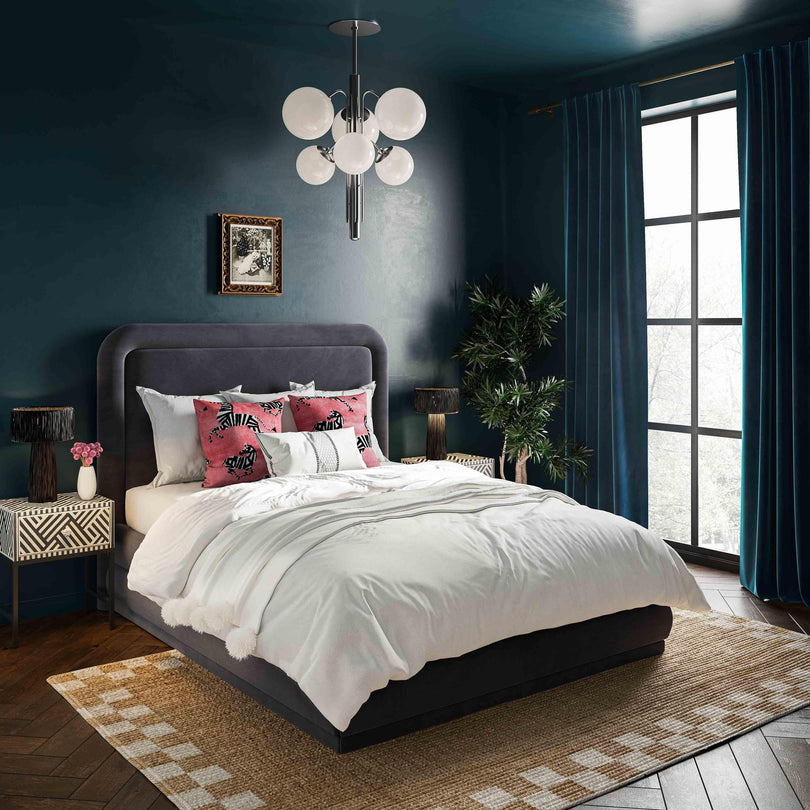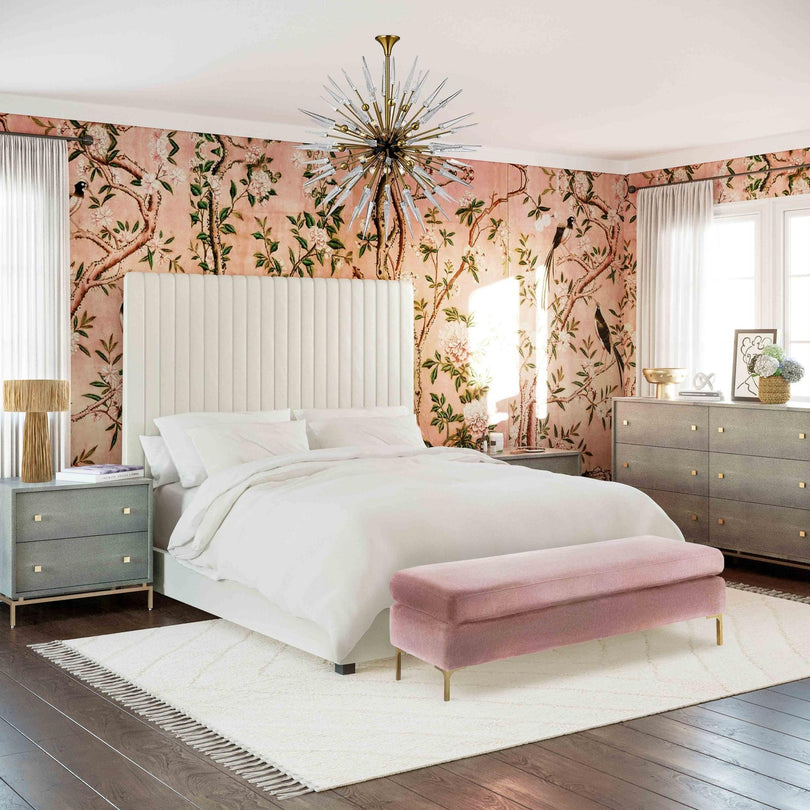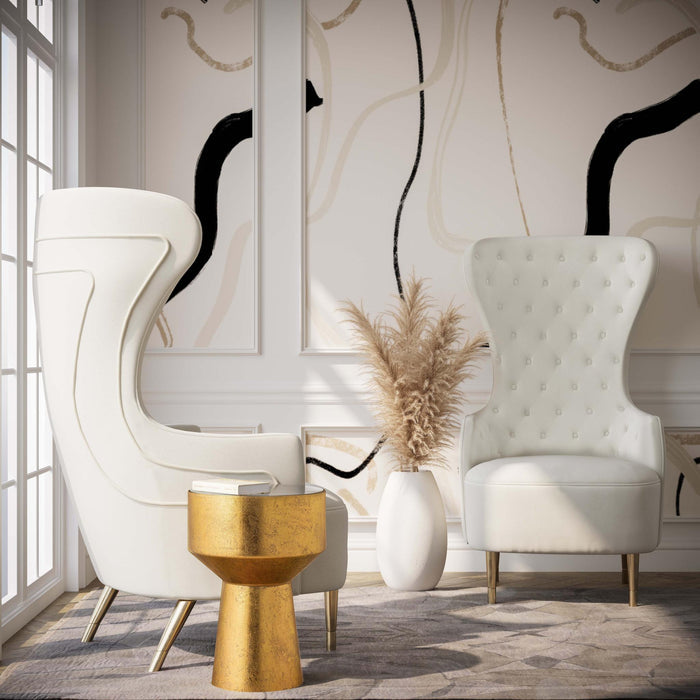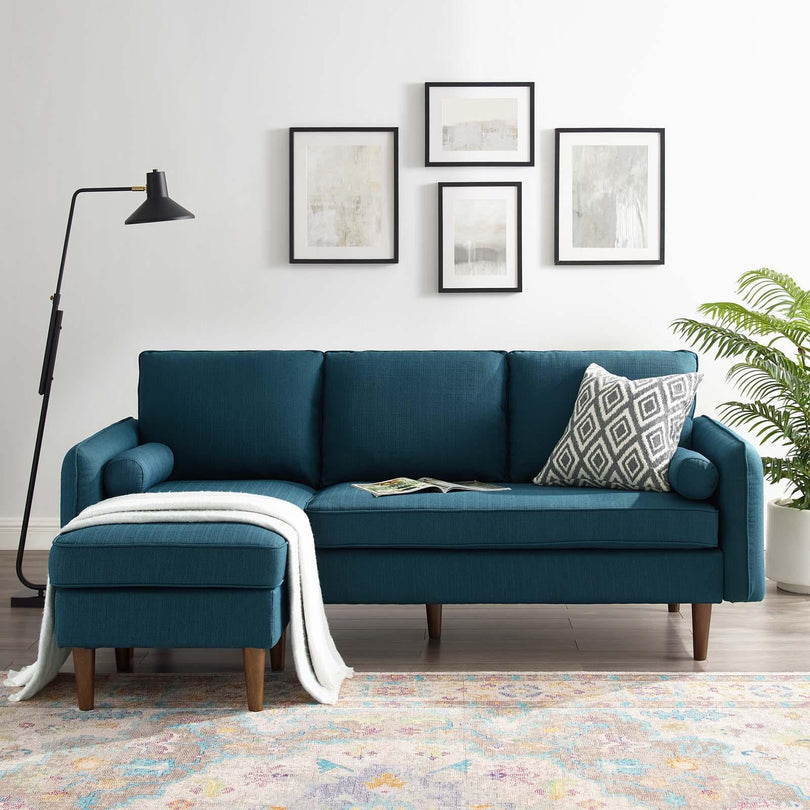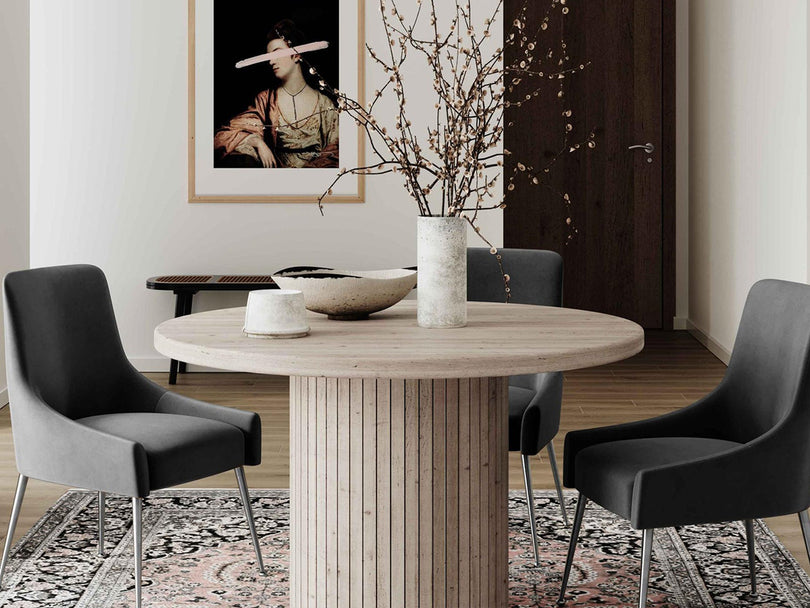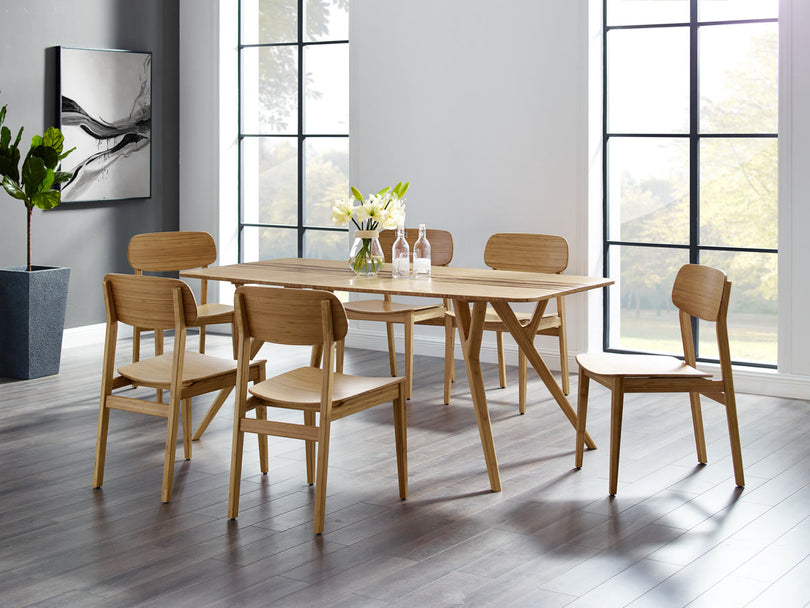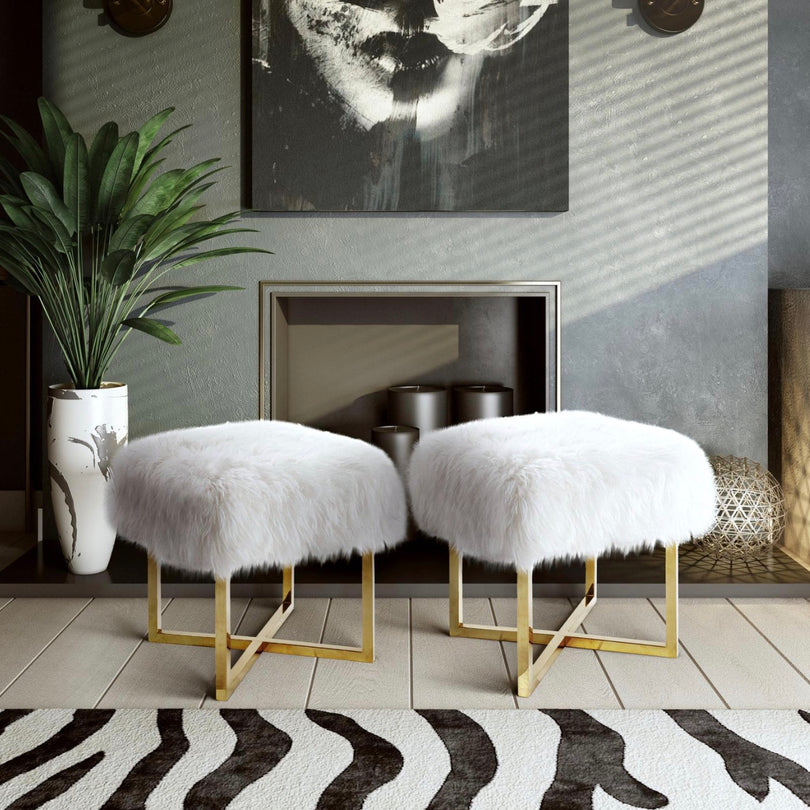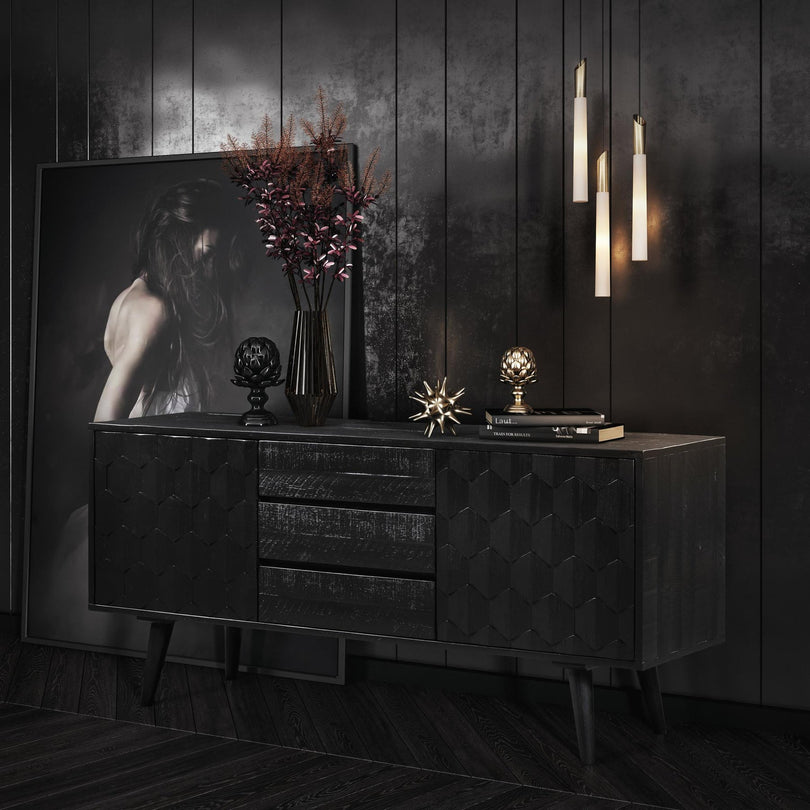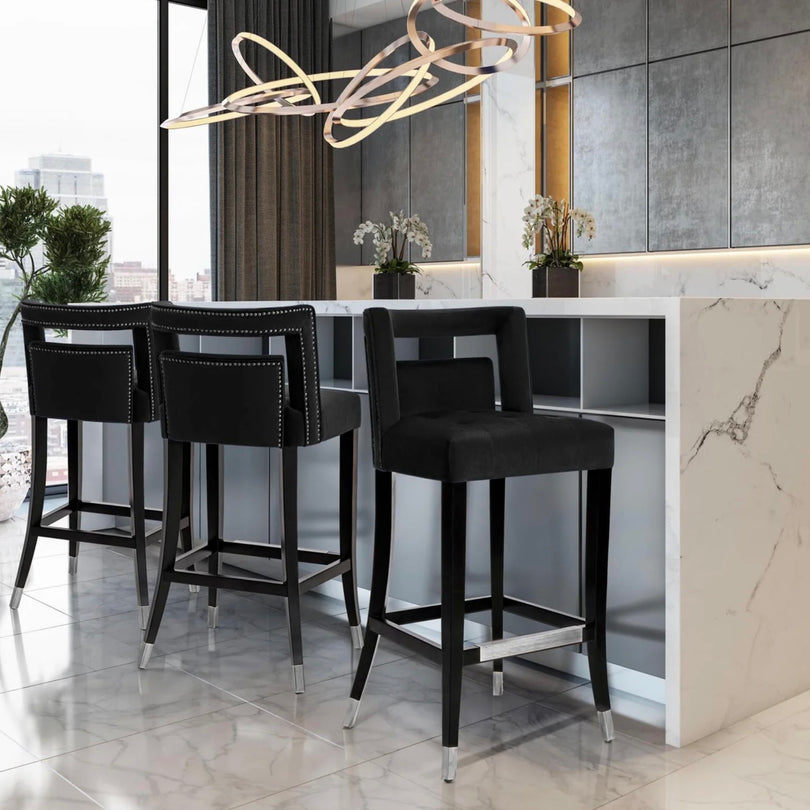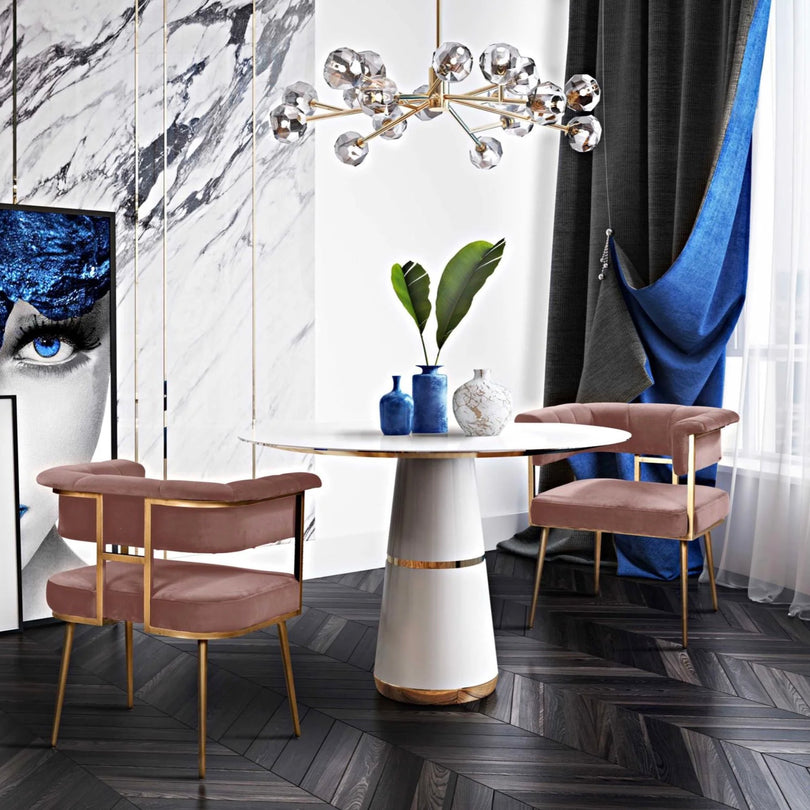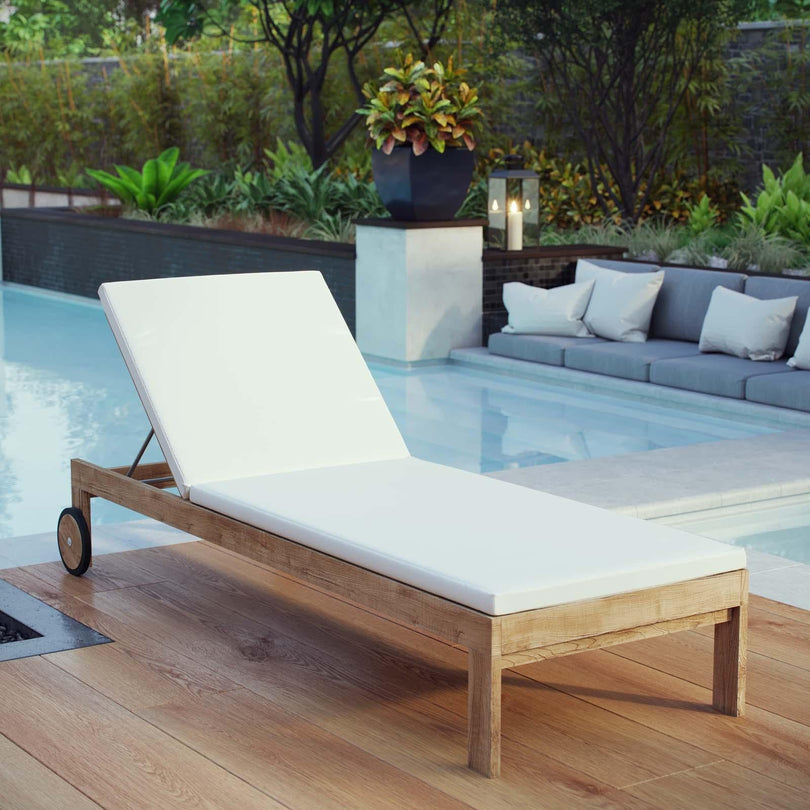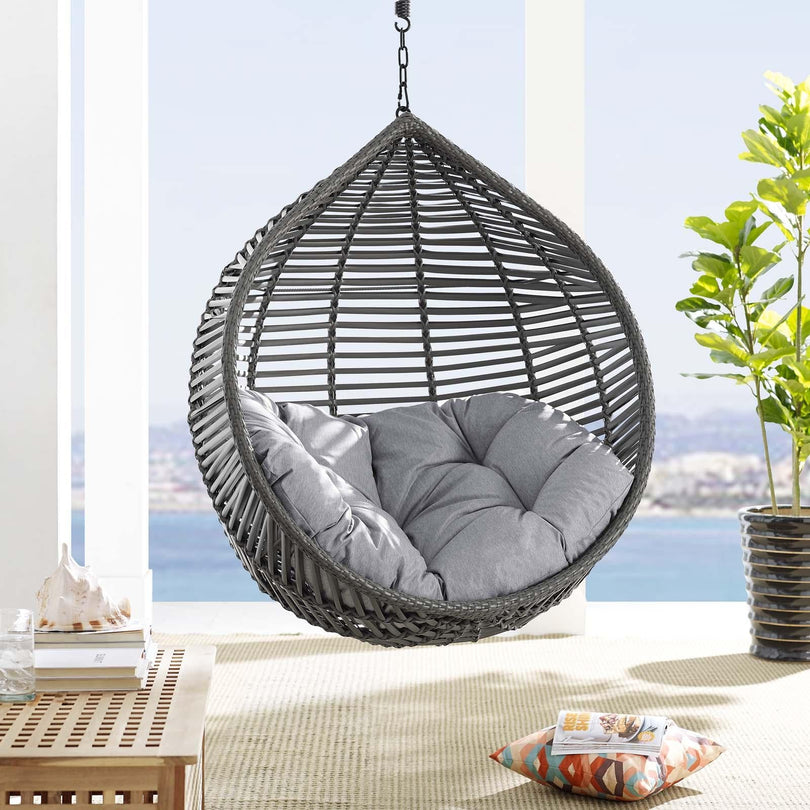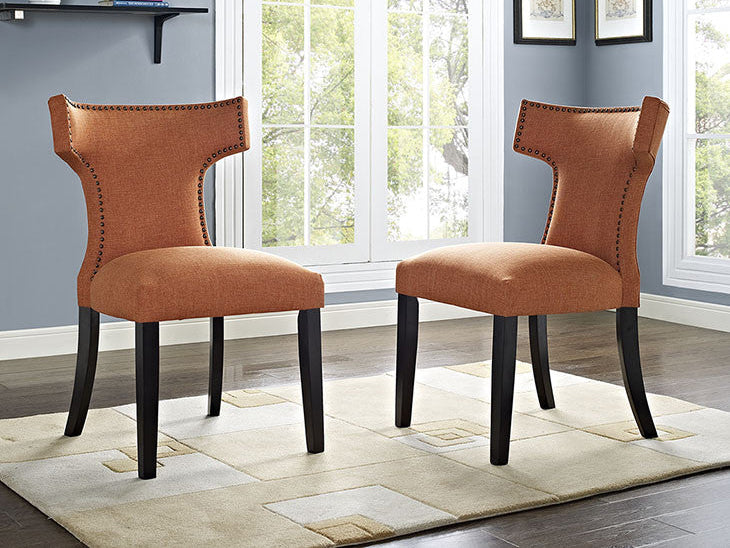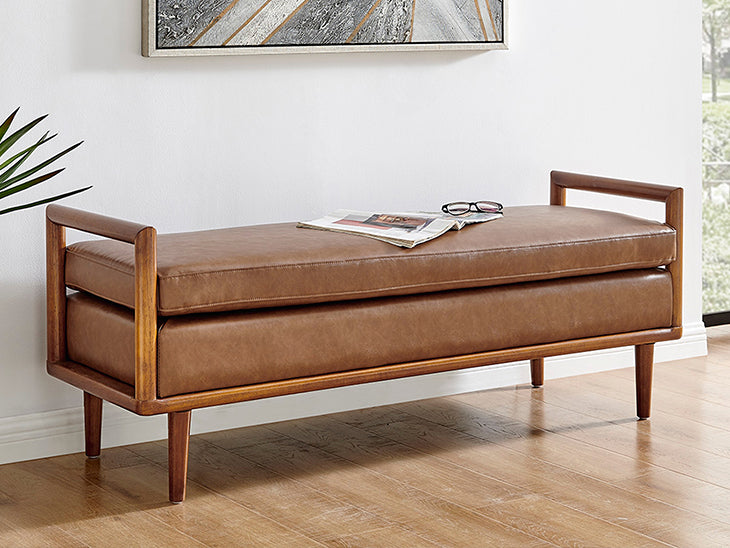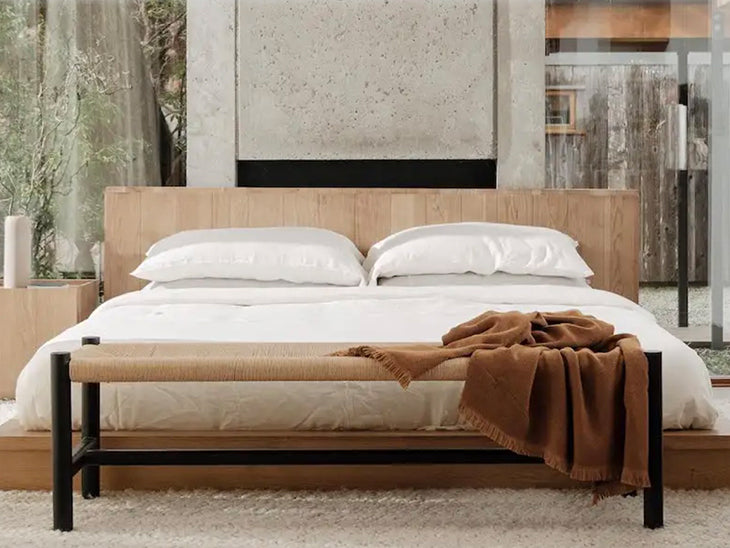Entering the world of furniture selection can be truly overwhelming, especially when you're striving to achieve a particular design aesthetic. Understandably, many homeowners are captivated by minimalist design due to its clean, uncluttered appeal and serene charm. Yet mastering minimalist furniture selection involves more than simply choosing items with a modern or understated look. Instead, it's about apprehending a set of principles that prioritize simplicity, restraint, functionality and the strategic use of space. This comprehensive guide is a deep dive into the fundamentals of creating a minimalist home with a careful furniture selection process. It will help homeowners understand and fully implement the minimalist vision in their abodes - a proven recipe for a more harmonious, spacious, and aesthetically pleasing living environment. Join us as we explore exquisite minimalism, trends to look out for, and how to create a truly captivating minimalist space that is warm, welcoming, and uniquely yours.
Principles of Minimalist Furniture
When it comes to adorning your living space, less can indeed be more. The principles of minimalist furniture revolve around the fundamental idea of 'less is more.' This principle enables you to achieve a high aesthetic value using few, but precise and bold elements. By focusing on simplicity, functionality, clean lines, and restrained decoration, minimalist furniture, precisely chosen, can transform your space into a serene sanctuary, away from the usual hustle and bustle.
Simplicity and Functionality
The first principle of minimalist furniture is duality—simplicity and functionality. It emphasizes the idea where each piece of furniture should serve a specific purpose. Designers strip down every non-essential element and focus on the object's main function. This approach results in a simple design, devoid of superfluous elements, yet highly functional. When Choosing Right Minimalist Furniture for your space, it's key to consider each piece's practicality and simplicity.
Clean Lines and Simple Shapes
The second principle is about playing with lines and shapes to create aesthetically pleasing furniture. Minimalist furniture typically features geometric shapes, defined by clean lines. These design elements bring a sense of order and harmony to the environment, instilling a calm and peaceful atmosphere. Be it a rectangular coffee table or a circular mirror, the beauty lies in their structure—simple and streamlined.
Restraint in Decoration
Finally, the principle of restraint in decoration is a cornerstone of minimalist furniture design. Ornamentation is kept to a bare minimum; this does not mean the living space will appear boring or sterile. Instead, it allows the minimalist furniture and the room architecture itself to shine. Each piece becomes a focal point, speaking volumes with its few but expressive elements.
To sum up, the principles of minimalist furniture revolve around the key concepts of simplicity, functionality, clean lines, and restrained decoration. Engaging with these principles will allow you to create a serene and tranquil space imbued with quiet sophistication.
Upcoming Minimalist Furniture Trends
As we navigate through the rapidly evolving aesthetic world, minimalist furniture continues to carve a significant niche, commanding a compelling blend of functionality, simplicity, and refined beauty. Packed with uncluttered elegance, this burgeoning sector is seeing trends that fundamentally reshape our living spaces. Promising an exciting future, here are five upcoming minimalist furniture trends that are poised to redefine interior design.
Smart Tech Integration
Agility and intelligence are critical in our fast-paced, hyper-connected world. Therefore, it's no surprise that smart technology integration is a leading trend in minimalist furniture design. Seamlessly controlling your home's systems has become not only a necessity but also an embodiment of style. Coffee tables that double as wireless chargers, lamps with inbuilt dimmers, or chairs with temperature control settings are just a taste of the techno-centric aesthetic in modern minimalist furniture design. Such functional yet chic pieces align with the beautifying efficiency promised by Minimalist Furniture Trends.
Black and White Schemes
In the realm of colors, the minimalist scene is overwhelmingly ruled by black and white schemes. Representing versatility and timeless beauty, these shades never fail to leave a lasting impression. White conveys a sense of space and tranquility, while black emits a compelling charm, rendering them perfect for a minimalist palette. When intertwined in furniture design, they dispense an aura of sophistication, making your living spaces breathe with elegance and grace.
Multi-Functional Pieces
True to its nature, minimalist furniture continues to embrace principles of utility and spatial efficiency. With living spaces becoming increasingly compact, multi-functional pieces have become an absolute necessity. Furniture pieces that offer storage and seating solutions, like sofa-cum-beds or ottomans with storage units, signify the minimalist ethos of getting more out of less. They transform your space into a model of practicality, without sacrificing aesthetics.
Sustainable Materials
The conscientious consumer's move towards sustainability is influencing minimalist furniture designs. Green, eco-friendly furniture, crafted from materials like bamboo, reclaimed wood, or recyclable plastics, is the new frontier. Furniture manufacturers are more than ever keen to reduce environmental footprints, leading to a growth in minimalist furniture that is not only sleek but sustainable too.
Minimal Minimalism
In the pursuit of simplicity, minimalism might just become more minimal. The less-is-more mantra is gaining momentum, with designers stripping decor down to its bare essentials. A trend towards minimal ornamentation signifies this lean towards extreme simplicity. Minimalist furniture, in its purest form, is all set to define spaces with its inherent simplicity, subtle elegance, and uncomplicated charm.
Carefully curated within a minimalist approach, each of these upcoming trends reaffirms the minimalist furniture's commitment to simplicity, functionality, and elegance. As we look forward to more iterations and innovations in minimalist furniture, we can only anticipate that our interiors will keep evolving and enchanting, reflecting and refining our contemporary lifestyle.
Achieving a Minimalist Look
Living in a space that embraces simplicity, declutters the mind, and highlights functional design, is becoming increasingly popular. Achieving a minimalist look in your home is as much about mindset as it is about tangible changes in the decoration. This section of our article delves into the key steps needed to attain this aesthetic. From the importance of decluttering and color restraint to the use of light, ventilation, symmetry, and asymmetry, every detail counts towards crafting a serene and elegantly minimalist environment.
Decluttering and Color Restraint
The first step towards minimalist living involves decluttering. It's about peeling back the layers of your belongings and keeping only the items that serve a purpose. To do so, adopt the mindset that less is more when evaluating what stays and what goes.
Color restraint, on the other hand, involves creating a neutral, calming backdrop for fewer pieces of decor to shine. Choose a color palette that is easy on the eyes, leans towards subdued, softer options, and keeps the selection limited to two or three primary colors.
Importance of Lighting
Lighting in a minimalist setup is more than just functional—it serves as a subtle decorative element. Soft, subtle light helps in adding texture to the space, adds warmth, and even serves to heighten the minimalist ambiance.
So, invest in good quality, versatile light fixtures that complement the minimalist theme. And remember, over-illumination is a no-go in a minimalist setup.
Natural Light and Ventilation
A well-lit room with ample natural light adds an element of openness and freshness to the space. Large windows reap the benefits of natural light, and when paired with suitable ventilation, they help to maintain a cozy ambiance in your minimalist home.
Employ sheer window curtains to control the amount of light that enters the room and use strategically placed plants to improve indoor air quality. These additions will allow you to create a harmonious relationship with nature while sticking to your chosen aesthetic.
Use of Symmetry and Asymmetry
To attain balance in your minimalist home, play with both symmetry and asymmetry. Symmetrical arrangements create a sense of order and formality, adding a calm and serene ambiance. Asymmetrical arrangements can add interest and energy, preventing the space from becoming monotonous.
Remember, maintaining balance is crucial in a minimalist home. Carefully consider the arrangement of furniture and decor to ensure there is neither too much nor too little in a space. To learn more about the role furniture plays in a minimalist setting, check out our guide on Styling Home with Minimalist Furniture.
In essence, achieving a minimalist look is a thoughtful and intentional pursuit. Each element, whether it be lighting, color restraint, or the use of natural elements, contributes to creating a stripped-down, serene, and soothing space that is free of clutter and unnecessary distractions. And just remember, in minimalism, every piece serves a purpose.
Warm Minimalism
Introduced as a softer alternative to staunch minimalism, Warm Minimalism has quickly become a favorite in interior design circles, renowned for its blend of luxury and comfort. It's a style that underscores the importance of functionality, while breathing depth and warmth into spaces primarily by adopting natural elements and textures. Far from cold and sterile, this design movement addresses the innate human desire for inviting and inclusive spaces where everyday life can unfold.
Emphasis on Warmth and Welcome
When it comes to warm minimalism, the keyword is 'warmth'. This design philosophy recognizes that a home should be more than just aesthetically pleasing – it should cater to human emotions and elevate everyday experiences. Warm Minimalism rejects the idea that stark, empty spaces are the only expressions of minimalism. It interprets the concept instead by integrating practicality and comfort.
Achieving this balance entails thoughtful layering of home accessories that do not overpower the overall minimalist aesthetic. Depending on personal preference, one may include cove lighting to create a warm, ambient glow or use rugs and curtains to add a sense of cozy sophistication.
Choice of Natural Materials and adding Texture
Capitalizing on the inherent beauty of natural elements is at the heart of Warm Minimalism. By incorporating materials such as wood, stone, concrete, or even terracotta, one breathes life and texture into otherwise simple, understated spaces. This design philosophy values authenticity and embraces materials that evolve and age gracefully, hence aligning with the principles of sustainability.
Another distinctive trait of Warm Minimalism is its emphasis on texture. The style cleverly uses layers of tactile materials to create visual interest and exceptional sensory appeal. This could translate into an elegant linen sofa against a raw concrete wall, or a sleek wooden dining table adorned with coarse, knitted placemats.
Though new, Warm Minimalism is an approach to design that encourages us to declutter our spaces not just for the sake of aesthetics, but also to improve our quality of life. It’s a reminder that minimalism is not about exclusion. On the contrary, This design philosophy encourages selecting only the elements that resonate with you, thereby creating a unique space that truly feels like home.
Storage and Minimalist Design
Minimalism isn't just about reducing clutter—it's a lifestyle choice based on the philosophy of simplification. In home décor, it translates into streamlined surfaces, sleek designs, and uncomplicated areas that breathe life into your spaces. They offer a clean, fresh aesthetic that borders on the futuristic. However, the challenge is maintaining this minimalist look while managing to store your essentials without the area looking cluttered. This is where creative storage solutions and recycling effectively play integral roles.
Creative Storage Solutions
The mantra of minimalist living is, "Less is more." Hence, your storage should be cleverly tucked away to maintain clean lines and decluttered spaces. So, how can you accomplish this? The answer lies in multi-functional furniture. Imagine having an ottoman that also serves as a storage box for your books, a coffee table with ample hidden storage, or a sleek wall unit that acts as your TV stand, bookshelf, and display case―all in one!
- Multi-purpose Furniture: A bed with built-in drawers or a coffee table with shelves enhances storage space without adding additional clutter.
- Open Shelves: Instead of covering the walls with cabinets, choose open shelves. These keep the area airy and create an illusion of spatial vastness.
- Hidden Storage: Use hidden storage solutions such as built-in wall units. They complement the minimalist theme while providing an efficient decluttering space.
For more inspiration, check out these Minimalist Furniture Ideas that are trending in 2024.
Recycling and Reusing
When it comes to minimalist design, one might believe it's all about purchasing new, simplistic pieces. But the essence of minimalism also dwells in reusing and recycling. Not only is this approach eco-friendly, but it saves money and adds a unique touch to your décor.
- Vintage Pieces: Don't discard your grandmother's old trunk just yet. A touch-up here and there, and it could be your new coffee table or a quirky storage unit.
- DIY: Got a set of old wooden crates? Stack and secure them together to create a rustic bookshelf. Or take an old ladder, spruce it up with a fresh coat of paint, and voila! You have a new towel rack.
- Reusing: Old jars can be used for storing your kitchen essentials. It's minimal, neat, and sustainable.
The blend of smart storage and recycling can give your living area a chic upgrade while adhering to a minimalist design ethos. Whether it's about concealing your possessions artfully or using vintage furniture, blending practicality with design aesthetics can create a soothing, clutter-free space.
Strategic Use of Color
The power of color in interior design is undeniable. It plays a crucial role in setting the mood, influencing perceptions, and invoking reactions. When used astutely, it can totally transform a space, especially in minimalist designs. A strategic use of color can add depth, interest, and vibrancy to a room that could otherwise be perceived as dull and sterile.
So, let's now delve into the key considerations for strategically incorporating color into a minimalist space.
Considering the Room's Purpose
The color you choose should align with the function of the room. A shade that promotes tranquility, like soft blue or cool green, would be ideal for a bedroom or a meditation room. On the other hand, energetic colors, such as fiery red or sunny yellow, would be suitable for a kitchen or a workout space.
Balancing with Neutral Tones
Using bold colors doesn't mean that you have to abandon neutral shades. Actually, they should coexist in harmony to ensure that the vibrant tones do not overpower the room. A neutral backdrop makes the bold color stand out and come to life.
- Grey: This is a versatile color that pairs well with most shades, striking a balance between cool and warm tones.
- White: It's a classic minimalist option that gives an open, airy feeling and provides a perfect palette against which other colors can pop.
- Beige: This sandy shade lends warmth to a room whilst remaining unobtrusive, allowing richer tones to shine.
Highlighting Focal Points
Using bold colors to highlight features or items you wish to draw attention to is another great tactic. For instance, a scarlet sofa against a white wall or turquoise accents in an all-grey room can create an eye-catching feature.
"Design is not just what it looks like and feels like. Design is how it works." - Steve Jobs
A brilliant quote that signifies the profound role of color in interior design.
Incorporating color into a minimalist decor scheme is not just about being bold with color choices but executing a well-crafted strategy. From considering the room's function, to balancing with neutrals, and then to drawing attention with bold color usage, color can cradle, clamor, or create intrigue within a space. Through mindful color strategy, any minimalist design can be brought to life - vibrant with personality, and resonant with purpose.
The Minimalist Curve Trend
Journey with us as we explore the world of interior design and its latest entrant, The Minimalist Curve Trend. This innovative styling method has recently taken the decor world by storm, as more and more people are embracing its unique aesthetics.
Defined by its streamlined shapes and subtle curvature, this trend breaks away from the rigid lines traditionally associated with minimalistic design. However, it isn't merely about aesthetics. The unordinary twist given by the curved furniture introduces softness into the room, breaking the monotony of clean lines, thereby creating a harmonious blend of simplicity and sophistication.
As we delve deeper into the distinct aspects of this trend, let's highlight some of the contributing factors that have led to its rise in popularity.
Graceful Silhouette
The strategically curved furniture doesn't just add an artistic flair to the setting, it also surprises us by challenging the traditional norms of minimal design being linear and rigid.
Enhanced Comfort
Aesthetics apart, let's not overlook the practicality of curved designs. They prove to be more ergonomic and can add an additional layer of comfort to your home's seating arrangement.
Fusion Aesthetic
Gone are the days when mixing styles was a design faux pas. Curved furniture not only softens the lines but also acts as a binding element, creating a flawless fusion of different aesthetics.
Those seeking an air of laid-back elegance, a space that encourages relaxation, and yet retains a highly stylized look, The Minimalist Curve Trend is an impeccable solution. By seamlessly merging geometry and design, it adds a sense of dynamism to the living area, proving that minimalism doesn't have to be synonymous with monotony.
Reflect on your taste in interior decor and see if the relaxed, yet sophisticated vibe of The Minimalist Curve Trend fits your desire for a comfortable, yet beautiful home. Remember, your living space is an extension of you, and with this trend, you have the potential to create something genuinely unique. So take a leap, bend some rules, because who knows? The results just might sweep you off your feet.
Conclusion
Embracing minimalist furniture doesn't mean you have to forsake comfort or functionality. From incorporating clean lines and simple shapes to integrating smart tech and choosing sustainable materials, there's so much to explore when creating a minimalist home. And remember, while sleek whites and cool grays have long been the staple colors in minimalism, don't be afraid of injecting some warmth and personal touch into your space to truly make it your own.
As you navigate your minimalist journey, remember that Minimal & Modern is always here to assist. Our carefully curated collection boasts a wide array of tasteful, contemporary pieces perfect for those seeking to cultivate a minimalist aesthetic at home. Visit us here to shop from our range of sophisticated and elegant minimalist furniture, each piece a testament to the principles we've explored above. Enjoy the tranquility and joy a minimalist lifestyle brings, one piece of furniture at a time!
Frequently Asked Questions
-
What are some key principles to follow when designing a minimalist home?
Some key principles to follow when designing a minimalist home are: 1. Declutter and simplify the space, 2. Opt for clean lines and simple shapes, 3. Use neutral colors and limited color palette, 4. Prioritize functionality over decorative elements, and 5. Maximize natural light and open spaces.
-
What types of furniture work best for a minimalist home design?
Furniture pieces that work best for a minimalist home design are: 1. Simple and streamlined sofas and chairs, 2. Minimalist dining tables and chairs, 3. Sleek and functional storage units, 4. Floating shelves and wall-mounted furniture, and 5. Minimalist bed frames and bedroom furniture.
-
How can I create a minimalist home office space?
To create a minimalist home office space, consider these tips: 1. Choose a simple desk with clean lines, 2. Use a comfortable yet minimalistic chair, 3. Keep the desk surface clutter-free, 4. Opt for efficient storage solutions to keep essentials organized, and 5. Incorporate natural light and minimalist decor for a calming ambiance.
-
Where can I find minimalist furniture for my home?
There are various places where you can find minimalist furniture for your home, such as: 1. Online furniture retailers specializing in minimalist designs, 2. Furniture stores that offer a dedicated minimalist furniture section, 3. Secondhand stores and online marketplaces for pre-owned minimalist furniture, and 4. Custom furniture makers who can create bespoke minimalist pieces.
-
How can I incorporate a minimalist aesthetic into my outdoor living space?
To incorporate a minimalist aesthetic into your outdoor living space, consider these ideas: 1. Choose simple and sleek outdoor furniture, 2. Opt for a limited color palette and natural materials, 3. Use minimalist landscaping with clean lines and minimal ornamentation, 4. Create open and uncluttered outdoor spaces, and 5. Emphasize functionality and simplicity in outdoor accessories.

